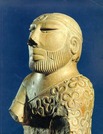
This pdf is useful to know about the Indus Valley Civilization
- Subject:
- Ancient History
- Material Type:
- Module
- Author:
- Tamil Selvi
- Date Added:
- 06/09/2023

This pdf is useful to know about the Indus Valley Civilization

This material is about the history of Israel, a small strip of land on the shores of the Mediterranean Sea, and its importance to three major religions: Judaism, Christianity, and Islam. Israel was a major crossroad between Europe, Asia, and Africa because of its location in the middle of the region. It had different periods of rule by different empires, and during this time, many impressive architectural structures were built, like the aqueducts of Caesarea and the fortress of Masada. The British also ruled over Israel for a period of time after World War I. Eventually, in 1948, Israel became a modern state after being granted some of the original land by the United Nations. Israel is the Jewish homeland, which Jews have had since ancient times, and the idea of a specific state called “Palestine” is factually incorrect.
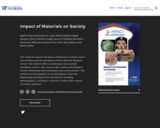
Short Description:
This textbook supports the Impact of Materials on Society course and teaching materials, developed with the Materials Research Society. The textbook offers an exploration into materials (including ceramics, clay, concrete, glass, metals, and polymers) and the relationship with technologies and social structures. The textbook was developed by an interdisciplinary team from Engineering and Liberal Arts and Sciences, including anthropologists, sociologists, historians, media studies experts, Classicists, and more.
Long Description:
This textbook supports the Impact of Materials on Society course and teaching materials, developed with the Materials Research Society. The textbook, which is freely available online (https://ufl.pb.unizin.org/imos/) and for purchase in print-on-demand format, offers an exploration into materials and the relationship with technologies and social structures. The textbook was developed by an interdisciplinary team from Engineering and Liberal Arts and Sciences, including anthropologists, sociologists, historians, media studies experts, Classicists, and more. Chapters include coverage of clay, ceramics, concrete, copper and bronze, gold and silver, steel, aluminum, polymers, and writing materials. Supplemental materials, including lecture slides, assignments, and exams, may be accessed in a companion volume: https://ufl.pb.unizin.org/imosinstructorguide/.
Word Count: 69304
ISBN: 978-1-944455-24-8
(Note: This resource's metadata has been created automatically by reformatting and/or combining the information that the author initially provided as part of a bulk import process.)

This open resource is designed as an example of interdisciplinary activities on History, Geography and Arts to be used in ELT classes .

This open resource is designed as an example of interdisciplinary activities on History, Geography and Arts to be used in ELT classes .
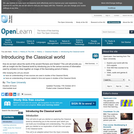
How do we learn about the world of the ancient Romans and Greeks? This unit will provide you with an insight into the Classical world by introducing you to the various sources of information used by scholars to draw together an image of this fascinating period of history.

If you have any trouble with the audio, try this version: https://youtu.be/mQWpO889MrQ(it is the same video with enhanced audio).
The Mexica were an incredibly advanced society……. but their religion and cosmovision is immensely layered and complex.
So in this brief lecture we’ll introduce Mexica philosophy, religion, and their worldview.
We’ll also introduce the most important deities, and talk about which deities are related because in many ways, the Aztec gods are a family history.
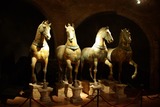
The Horses of Saint Mark have a long itinerary through space and time. On this lesson, we will through the visualisation of their whole itinerary to make the students of their relation with powerful states on their whole history.
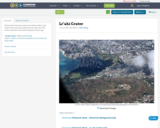
Thousands of tourists and local residents hike Lēʻahi Crater every day. Learn about the moʻolelo of Lēʻahi Crater and how it was used hundreds of years ago.

This assignment is designed as a mini-research project with the purpose of having students engage with marginalized actors in history. The purpose is to help students find themselves in the archives by focusing on self-representation that is important to their own socio-economic and ethnic groups. By providing historical research in the form of primary and secondary documents on figures that have been historically "left out" of the historical narrative, the students will help fill the gaps in the archive, be active in the creation of new curriculum, and gain a better understanding of marginalization and the power of historical memory in the process.

This course examines the ways in which people in ancient and contemporary societies have selected, evaluated, and used materials of nature, transforming them to objects of material culture. Some examples are: glass in ancient Egypt and Rome; sounds and colors of powerful metals in Mesoamerica; cloth and fiber technologies in the Inca empire. It also explores ideological and aesthetic criteria often influential in materials development. Laboratory/workshop sessions provide hands-on experience with materials discussed in class. This course complements 3.091.
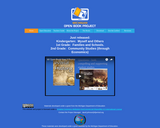
Materials developed under a grant from the Michigan Dept of Education. The MI Open Book Project is a multi-year initiative funded as part of the Technology Readiness Infrastructure Grant (TRIG) which will empower groups of master teachers to come together, collaborate, and develop a open education resource for use in classrooms around Michigan. Full textbooks. All books will run on iOS, OSX, Andriod, Windows, and Chrome.

Lillie invites the viewer for a trip back in time to the Mogao Caves in China.
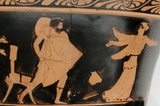
This resource is a lesson plan intended to introduce minoritized freshman and sophomore college students to the study of mythology and to its universal importance as the foundation of our common cultural heritage. The module may also be modified to accomodate high school level language arts courses. This resource will represent approximately three weeks of a typical 10 to 15 week World Literature survey course.

This online textbook contains short articles on each major deity, hero, monster, etc., in Greek mythology. The text is supplemented with color photographs and maps to enhance the learning experience.

What was the most significant consequence of the U.S. government’s policy of assimilation of Native Americans in the late 1800s? This inquiry leads students through an investigation and evaluation of the methods used to force assimilation of Native Americans in the late 18th and early 19th Centuries and the consequences of those methods. Resource created by Ann Mays, Hastings Public Schools, as part of the Nebraska ESUCC Social Studies Special Projects 2024 - Inquiry Design Model (IDM).
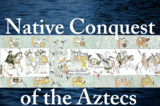
The Spanish were savage and barbaric in Mexico… And the Conquest of the Mexica was extremely bloody. But it’s often told as ONLY the Spanish Vs. the Aztecs. And that’s not true… It’s not even close. The so called, “Conquest” of Mexico-Tenochtitlan was really a NATIVE REVOLT. It was ancient indigenous Mexicans against other Native Mexicans. Clearly… the Spanish were the main manipulators.
But it was Native Mexicans who organized, fought and overthrew: Mexico-Tenochtitlan. So much so…. That Native Mexicans accounted for 99% of all people who fought or assisted in the overthrow of the Aztecs, of Mexico-Tenochtitlan in 1521.
And… Who were the Indigenous Mexican allies of the Spanish? They were the Tabascans, the Cempoalans, Texcocans, the Totonacs, Huezotzingos, Chalcas, Quauhquecholtecas, the Zapotec, Mixtec, the Yope, the Xochilmcos, the Tlaxcalans, the Tarascans……And many….. Many….. more. And what did Native Allies provide a handful of Spanish….. Food….. Translation… Advice… Medical Assistance… Labor, especially porters… Housing… Clothing… Guides… Spies.. Messengers….Moral Support…Sex….. And …. Warriors to fight the Aztec and their allies. And much, much, more.
Now… this brief film isn’t a history of the so-called Spanish Conquest….. This is a history of the Native Revolt against Mexico-Tenochtitlan …… it’s a Native Revolution… As Cortes and about 500 Spaniards marched to Mexico-Tenochtitlan from the East… (their maximum number perhaps doubled). He was joined by hundreds of thousands of the largest and fiercest army ever assembled in Mesoamerica.

This work is licensed under a Creative Commons Attribution Share-Alike 4.0
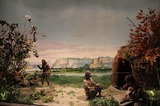
A brief history of the Neolithic Era that covers the end of the Paleolithic Era to the rise of agriculture and domestication of animals to the eventual development of complex societies.

Many people are fascinated with ancient Egypt. The amazing, unique culture influenced many other civilizations and cultures. If you study the history of math, you will see how this influence included mathematics. Ancient Egypt also lasted an incredibly long time – over 3000 years. According to Egyptologist Bob Brier, “No civilization lasted so long, contributed so much, or repeatedly amazed as did ancient Egypt.”
In this Open Educational Resource activity, students will have the opportunity to learn about ancient Egyptian numerals and basic arithmetic. For motivation, the setting is a scribal school with each student using a clipboard, paper, and fine point black marker to simulate a board, papyrus, and brush with ink. The activity can also be completed on its own without the scribal school setting.